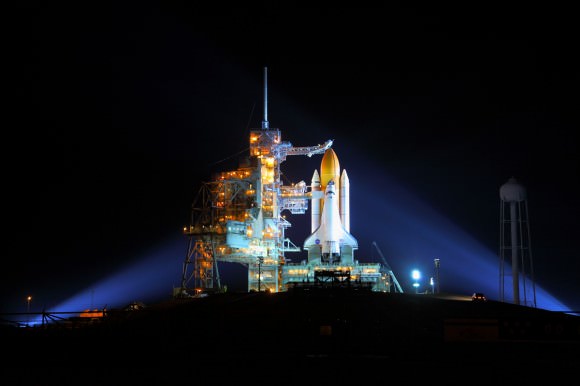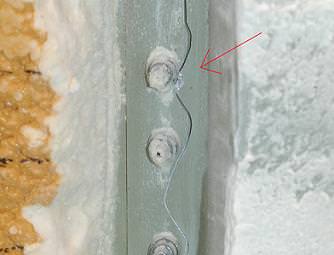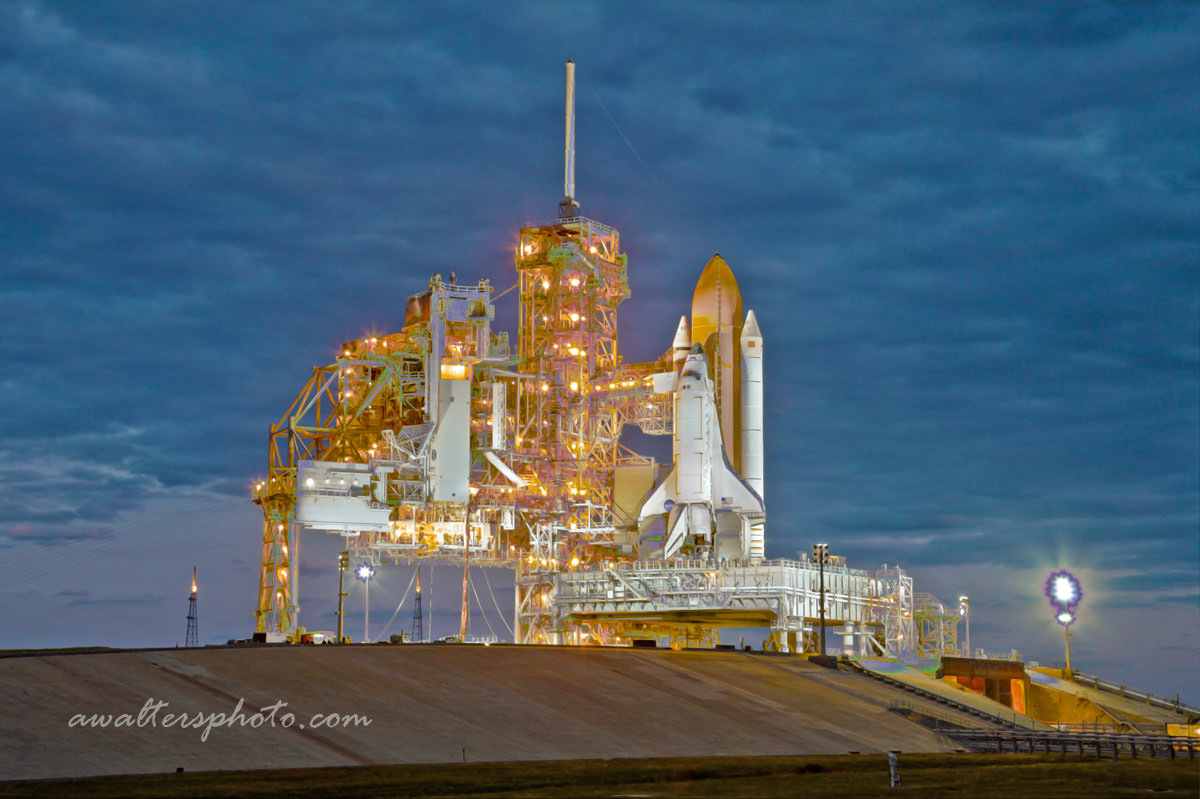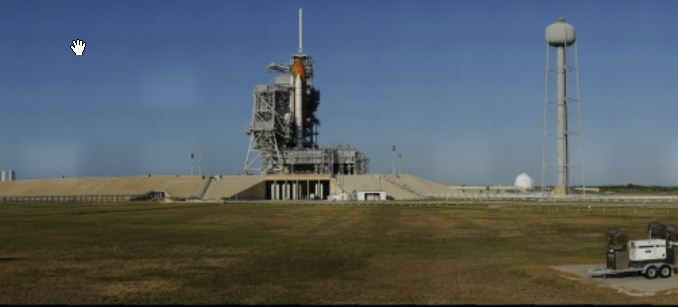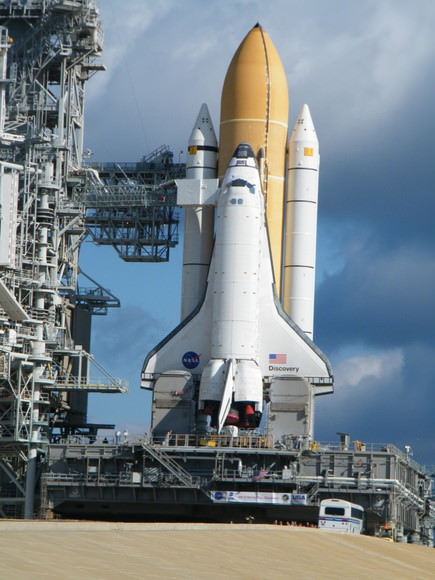The Expedition 25 crew landed safely in Kazakhstan at 11:46 p.m. EST Thursday (Friday 10:46 a.m. Kazakhstan time). The trio — Doug Wheelock, Shannon Walker and Soyuz Commander Fyodor Yurchikhin — undocked in the Soyuz TMA-19 at 8:23 p.m. ending their 5-1/2 month stay at the International Space Station. Staying behind on the orbiting laboratory are Expedition 26 Commander Scott Kelly and Flight Engineers Alexander Kaleri and Oleg Skripochka.
Continue reading “Soyuz and 3 ISS Crewmembers Return Home”
The Fall and Rise of ‘X’
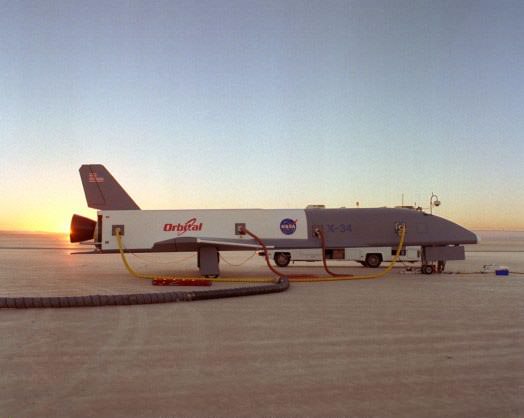
[/caption]
They are at the very edge of current U.S. technological capabilities; one is a supposedly mothballed technology test-bed, the other a super-secret space plane that is currently on orbit – but set to land soon. They are the X-planes, experimental spacecraft that are proving out concepts and capabilities whose beginnings can be traced to the dawn of the space age.
It would appear from amateur observers on the ground that the secretive U.S. Air Force X-37B space plane – will be landing soon. This prediction is based off the fact that the craft is dropping in altitude and the more basic fact that it is nearing the limit of its orbital capabilities and has to return to terra firma. According to the U.S. Air Force, the X-37B can remain on orbit for around nine months or 270 days at maximum, this means that the craft should be landing sometime in the middle of January.
The X-37B or Orbital Test Vehicle (OTV) lifted off from Cape Canaveral Air Force Station in Florida on Apr. 22, atop an Atlas V rocket. Not much is known after launch due to a media blackout imposed by the U.S. Air Force.
The Air Force remains mum about the details surrounding the landing and recovery of the X-37B. It is known that the spacecraft will land at Vandenberg Air Force Base in California.
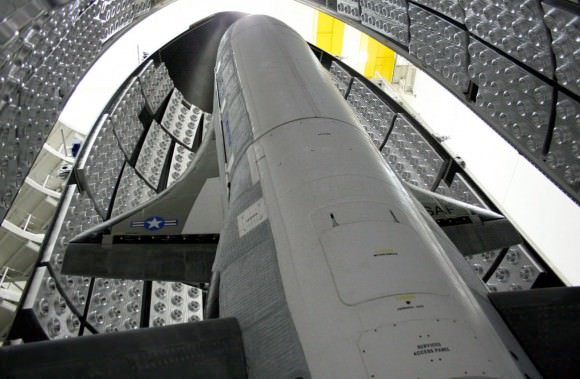
In many ways the craft resembles the shuttle with stubby wings, landing gear and a powerful engine that allows the craft to alter its orbit (much to the dismay of many observers on the ground). When the X-37B does touch down, it will do so at a 15,000 foot-long runway that was originally built to support the shuttle program.
The X-37B is one-quarter the size of the space shuttle. It is about 30 feet long and roughly 10 feet tall, with a 15-foot wingspan. It has a payload bay much like its larger, manned cousin – but naturally whatever that payload was for this mission – it was classified. The space plane was constructed by the Boeing Phantom Works. It is operated out of Schriever Air Force Base, Colorado. Another launch of the craft may take place as early as this March.
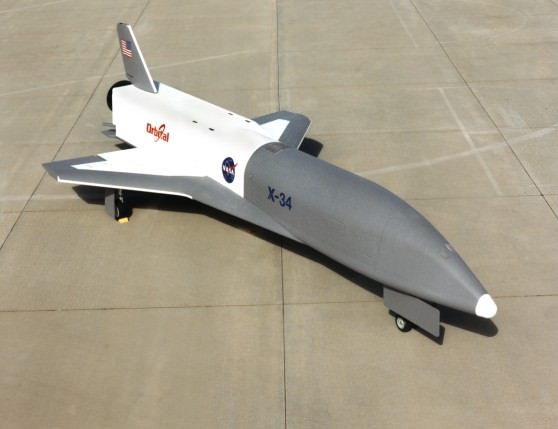
Meanwhile, as the X-37B is ready to head to the hangar, another X-craft appears to be given a new lease on life. Two of the X-34 spacecraft, built by Orbital Sciences Corporation (Orbital), were moved from their hangars at Dryden Flight Research Center to the National Test Pilot School located in the Mojave Desert in California. These technology test-bed demonstrator craft will be inspected by the NASA contractor with the idea of flying them once again.
The roughly 60 foot-long spacecraft were put into mothballs back in 2001. If their flight status is renewed they would add to the growing fleet of robotic spacecraft that the United States appears to be building.
The ‘X’ craft have a long and storied history in American aviation and space exploration. One of the most famous of the “X’ planes – was the legendary X-15. None other than the first man to walk on the moon, Neil Armstrong, flew in this program which tested out concepts that would be later employed in the space shuttle. As the X-37B prepares to end its first mission and the X-34 may be at the verge of a rebirth – could we be at the dawn of a new ‘X’-era? Only time will tell.
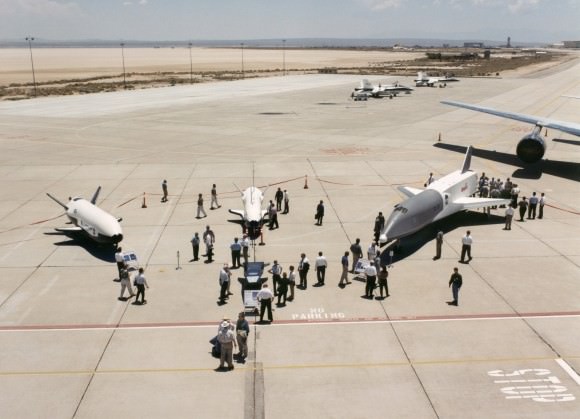
Shuttle Launch Could Be Delayed Into Next Year
[/caption]
While NASA managers have targeted space shuttle Discovery’s launch for no earlier than Dec. 17, they also said they don’t want to rush to any conclusions on the cracks found on the shuttle’s external tank. Therefore, shuttle program manager John Shannon said that if the team doesn’t completely understand the issues, they won’t launch until they do. That might mean mid-December, or it might mean they wait for the next launch window, which is in February of 2011 — or even later.
“It’s a complex problem,” said Shannon. “We really need to understand our risk. Clearly we’re not ready for the December 3 -7 window that’s coming up.”
“We are methodically looking at the data and we’ll let data the drive where we’re heading, drive when we launch,” said Bill Gerstenmaier, NASA’s Associate Administrator for Space Operations, speaking at a press briefing on Wednesday.
Engineering evaluations are ongoing of the four cracks on found on two 21-foot-long, U-shaped aluminum brackets called stringers on the shuttle’s external tank, and Shannon said they still need more analysis until they understand everything. The only previous time cracks like this have been seen are during the assembly process, or if the tank has been mishandled during assembly – cracks like this have never been seen at the launchpad before.
“We have worked hard to understand the exposure, and we want to understand everything,” Shannon said. “We’re looking at the fault tree from assembly, to how it gets foamed, to transport, to how it gets to KSC – every single part of that tank’s life is part of our fault tree analysis.”
It appears the biggest worry is not that the tank would fall apart during the stresses of launch, but that foam would be dislodged from the tank, which could impact the shuttle during launch. Foam from the ET is what damaged space shuttle Columbia, and caused it to disintegrate during reentry in 2003, killing all seven astronauts on board.
If the teams feel their analysis is complete and they have the flight rationale to fly, the earliest launch date would be Friday, Dec. 17 at 8:51:53 pm EST.
A Soyuz is scheduled to dock at the space station at 3 pm EST that day, carrying three new crew members to the ISS.
No launch dates are available in January 2011 because of constraints with the orbit of the space station and conflicts with other unmanned cargo launches. The launch window in February opens on the 27th and closes March 6. Another window, Feb. 3 -10 could be available if the Japanese cargo ship, scheduled to arrive in late January, can be moved to another port on the space station.
We’ll keep you posted.
Stunning Image, Heartfelt Poetry Could Become Icons of Space Age

[/caption]
Undoubtedly, this picture has what it takes to become an iconic image of human spaceflight, much like Apollo 8’s Earthrise or Bruce McCandless’ untethered spacewalk. Here, astronaut Tracy Caldwell Dyson looks down at Earth from the Cupola on the International Space Station, likely reflecting on both her home and her home in space. Everyone I know who has seen this image has just melted, with a sigh that says, “Oh, wow — that is just amazing!” (It made today’s Astronomy Picture of the Day.) My initial thoughts were that this is the one of the most poetic image of human spaceflight I have ever seen. And sure enough, Stuart Atkinson (the guy who I nominate at the Poet Laureate of Space) was inspired by this image, too. He has written a magnificent, heartfelt poem that captures the spirit –as well as the technology — of this image, and very likely sums up Caldwell Dyson’s thoughts as she gazes out the Cupola windows.
Read “Blue” by Stuart Atkinson:
BLUE
Ignoring the tsunami of technology humming behind her,
The chaos of cameras, computers and calculators
Covering the walls, she shuts her eyes and smiles.
This isn’t what she imagined as a girl.
In all those classroom daydreams she always saw herself
Looking down – or up – at the world from high above – or below –
Beside a plate-sized portal, straining to glimpse
Some small portion of the planet spinning silently beyond
The scratched and fingerprint-smeared glass, unable to see
More than mere hints of the colours, shadows and shapes
Shown in all the books and magazines…
But this…
Earth is there… everywhere…
A ball of burning blue close enough to touch.
Painted on the heavens in all its Van Gogh glory
It fills the sky, overflows her sight,
A startling Stargate of colour in an ocean of emptiness.
Even with her eyes closed she still sees its azure glow,
Feels its sapphire shades blazing in the ink-black night.
In the work-day-over darkness, Earthlight
Washes her face like cool rain as painfully beautiful
Whirls and whorls of milk-white cloud swirl
O’er the world below and she knows, in her aching
Heart, that long after she has returned to Terra,
To walk barefoot on its dew-drenched grass and
Splash in its ocean’s surging surf a part of her
Will always be here, at this window, gazing down
Upon the Earth.
© Stuart Atkinson 2010
Thanks to Stu for allowing us to publish his poem, a Universe Today exclusive! To see more of his poetry and imagery, check out his websites, Cumbrian Sky, and Road to Endeavour.
Structural Crack Found on Shuttle Tank
The chances of space shuttle Discovery launching on the STS-133 mission in 2010 could be in jeopardy. Cracked foam on the shuttle’s external tank was removed early Wednesday morning and underneath engineers found a structural crack on the tank itself. The serpentine crack is about 22 cm (9 inches) long and is located on a structural rib or “stringer.” Cracks like this have appeared on other tanks and were fixed at the production facility in New Orleans. But this type of repair has never been attempted at the launch pad.
Continue reading “Structural Crack Found on Shuttle Tank”
Stubborn Shuttle Discovery Refuses to Launch on Final Mission
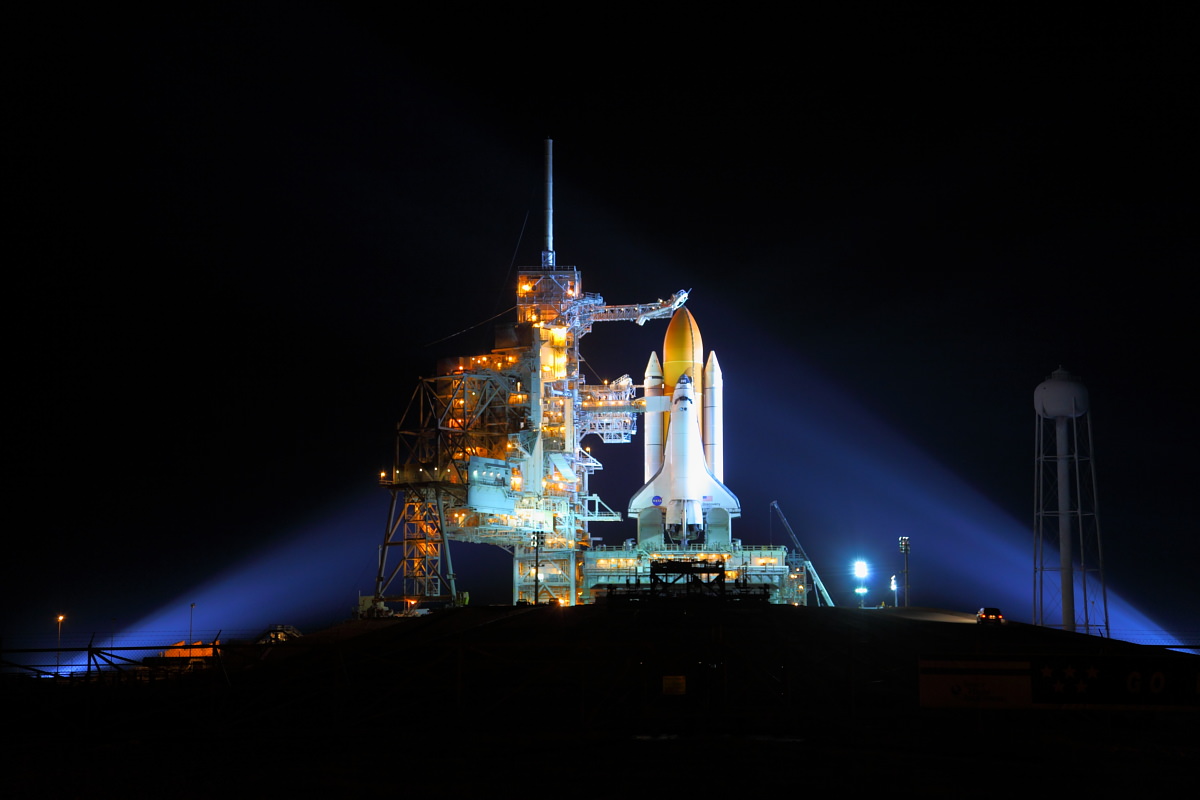
[/caption]
UPDATE: The launch has now been delayed until Nov. 30, as a crack was found in the foam on Discovery’s external tank after the fuel was offloaded this morning. Engineers posting on Twitter said the hydrogen leak this morning may have been a lucky break, as the crack had ice underneath and may have easily come off during launch. The crack was not seen previously.
It seems as through space shuttle Discovery keeps coming up with excuses to delay the launch of her final mission to space, and the launch pad facilities and weather are conspiring along with her. Originally scheduled to launch on Nov. 1, this latest delay comes from a hydrogen leak in a vent arm attached to the shuttle’s external tank. The work required will push back any further launch attempt until at least Monday, Nov. 8. That is the last day available in the current launch window, and if it doesn’t launch then the window closes until Nov. 30, due to unfavorable sun angles for when the shuttle would be docked to ISS.
This is not the first time a leak has occurred in the vent arm, but this time the leak was “substantial” said Launch Director Mike Leinbach.
“The signature of the leak is similar to what we’ve seen in the past when we’ve had leaks there, although the magnitude was higher this time and it occurred earlier in our tanking process,” he said.
Discovery’s 11-day mission to the International Space Station will bring a new storage module and the first humanoid robot, Robonaut 2, or R2 to the station. The Nov. 8 launch time is now scheduled for 12:53 Eastern STANDARD Time (17:53 UT).
Previous delays have stemmed from leaks in different systems, an electrical glitch and rainy, windy weather.
The launch scrubs have disappointed participants of the launch Tweet-up, where NASA allows Twitterers a chance to view a launch from Kennedy Space Center. While some of the participants are waiting out the delays, most have had to return home. This marks the first time there has been a launch delay when NASA has held a Tweet-up for a shuttle liftoff.
If you are needing to see a launch, try keeping an eye on a Delta II rocket launch from Vandenberg Air Force Base in California, with the COSMO Earth observing satellite. This rocket, too has had its share of delays, but is now slated for launch on Friday, Nov. 5 at 10:20 pm EDT (7:20 pm PDT).
Discovery’s Final Mission Scrubbed 24 Hours Due to Weather
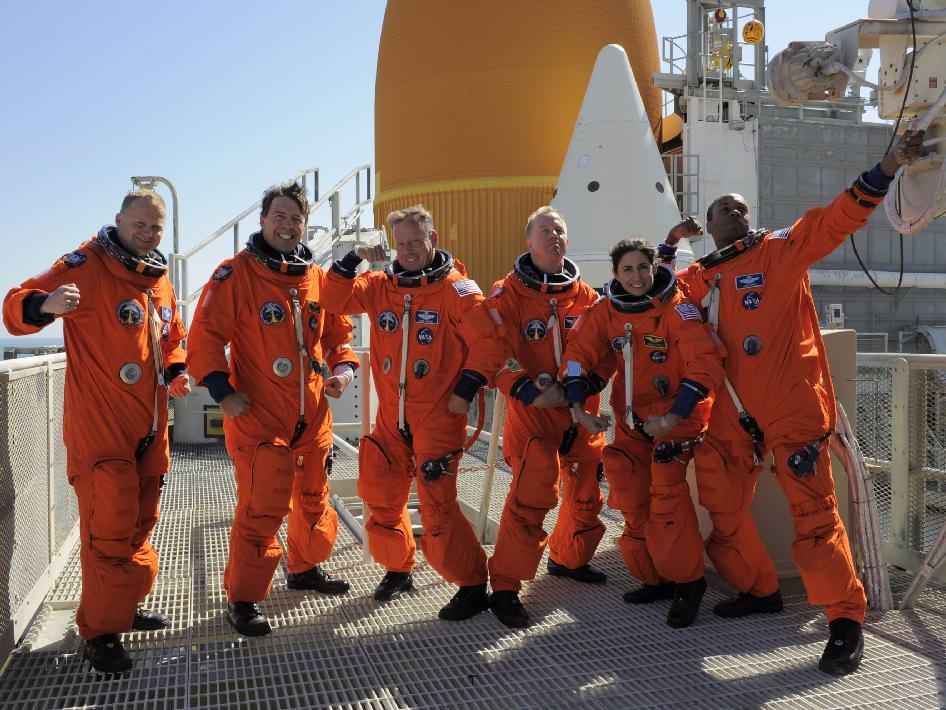
[/caption]
Discovery’s final flight faced its first hurdle in the form of a fuel leak in its right OMS pod. This problem seemed solved, but using an over-abundance of caution mission managers had the seals around the affected flange replaced. Then unrelated leaks of hydrogen and helium pushed the launch back to Nov. 2 and then Nov. 3. With that problem resolved many thought Discovery’s problems were behind her – enter a voltage issue in the number three engine’s backup control system. This conspired to push the launch back to Nov. 4.
However, in the early morning hours of Nov. 4 it was obvious that Florida’s turbulent weather would not allow a launch on this day and mission managers scrubbed the launch for at least 24 hours. Weather for Friday shows a 70 percent chance of favorable conditions. If Discovery does launch tomorrow, it will take place at 3:04 p.m. EDT.
Discovery’s final mission, STS-133, will deliver the Leonardo Multipurpose Module (PMM) with its cargo – including the first humanoid robot to be sent into space – Robonaut-2 (R2). Also riding along on this mission is the Express Logistics Carrier-4 and spare parts. Like the other remaining shuttle flights, these new components and supplies are designed to leave the space station better prepared for when the space shuttles are retired next year.
The crew of STS-133 will be comprised of Commander Steve Lindsey, Pilot Eric Boe and Mission Specialists; Alvin Drew, Nicole Stott, Tim Kopra and Michael Barratt. All of these astronauts are space flight veterans.
Discovery’s Final Mission Delayed Again
[/caption]
UPDATE: Discovery has been cleared for a launch attempt on Nov. 4 at 3:29:43 p.m. EDT. After a review, NASA managers decided the electrical glitch that prompted a 24-hour delay was not a threat to flight safety. The only problem now is that the weather report calls for rain and clouds, and gave an 80% chance for conditions that would prohibit launch. We’ll keep you updated.
A power controller on space shuttle Discovery’s main engine number three failed to start during routine checks this morning causing shuttle managers to push the final launch of Discovery back at least 24 hours to Nov. 4. Engineers began troubleshooting the problem – when it appeared to correct itself. Circuit breakers have had problems like this before. However, NASA mission managers wanted to make sure they fully understood what was causing the problems.
“We make sure we truly understand the risk before we fly,” said Mike Moses, Mission Management Team Chair. “The problem is pretty simple and we wanted to make sure we’re not to aggressive on our response.”
Teams will work through the night and into Wednesday morning on this problem. To remove the affected circuit is a fairly invasive procedure and some of the circuits involved cannot be retested on the launch pad. If the launch does not occur Thursday NASA has until Sunday to launch before the launch window closes. Currently, Discovery is set to launch Thursday, Nov. 4 at 3:29 p.m. EDT.
From a crew perspective it made sense to take an additional 24 hours,” said Mike Leinbach, Shuttle Launch Director. “We’ll pick back up with our launch countdown on Thursday morning.”
Discovery is set to launch on her final, 11-day mission to the International Space Station on mission STS-133. The crew of Discovery consists of Commander Steve Lindsey, Pilot Eric Boe and Mission Specialists; Alvin Drew, Nicole Stott, Tim Kopra and Michael Barratt. The payload for this mission is the Leonardo Permanent Multipurpose Module which houses among other things the first humanoid robot to fly into space – Robonaut-2. Also onboard is the Express Logistics Carrier-4 and much-needed spare parts.
Can’t Get to Kennedy Space Center? See Launchpad Up Close in Gigapan
[/caption]
From experience, I can tell you being at one of the launchpads at Kennedy Space Center is awesome beyond words. Not many people, though, get to see a shuttle on the launchpad up close and personal, and with just a couple launches left, many are at least are hoping to get a view of the launch. But if you aren’t able to travel to Florida and see a shuttle on the pad, you can take advantage of a few different websites that can take you there virtually, and probably bring you closer than you could ever get in person.
The first website is Gigapan, where NASA photographer Bill Ingalls has put together all the high resolution images he took on Sunday, Oct. 31, 2010 at Kennedy Space Center, and created one huge images that you can pan around and see everything up close. Go to the Gigapan website, and by moving your mouse around or by clicking on the images below the big image, you will be transported up close and personal with various locations within the image.
The Gigapan technology was originally developed for the Mars Exploration Rovers, and the panoramas created from Mars enabled a simulated experience of being on another planet. The Gigapan project aims to create a similar experience, but for exploration of Earth.
The second website is John O’Connor’s NASA Tech website. I met John when I was at Kennedy Space Center earlier this year, was able to watch him take the images for the extremely high resolution virtual tours he creates. The interactive 360 degree images he creates are nothing short of stunning — but they are also very bandwidth intensive — so be prepared, and watch out if you don’t have high speed internet or have a lot of browsers or windows open on your computer. Right now on his website you can see different views of the launchpad with Discovery sitting on top, and also go inside the space station processing facility and see Robonaut 2 before he was stowed for launch on STS-133, and much more.
Here’s an image I took of John setting up his equipment when we were at Launchpad 39B in March of this year.
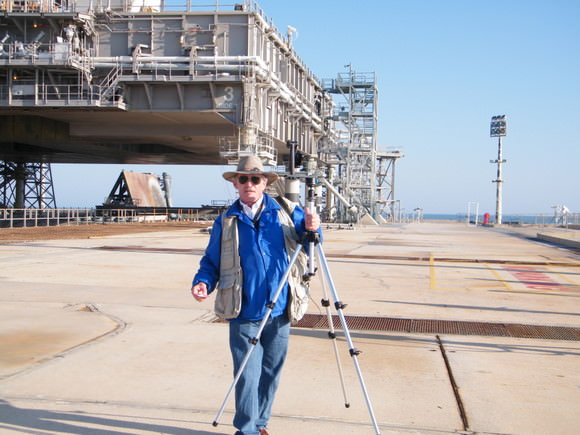
Shuttle Launch Delayed at Least One Day
[/caption]
Second Update (10/30): Launch of space shuttle Discovery is now targeted for Wednesday, Nov. 3 at 3:52p EDT. Technicians are still working to make repairs on the OMS engine.
The launch of space shuttle Discovery for the STS-133 mission has been pushed back at least one day due to the discovery of leaks in the right hand Orbital Maneuvering System Pod. Therefore, the launch will occur no sooner than Tuesday, Nov. 2 (and that has now been pushed to Nov. 3) . Managers, engineers and technicians are evaluating helium and nitrogen leaks in the pressurization portion of the OMS pod. The leaks must be fixed before launch and the decision was made to delay at least a day. Countdown had been scheduled to begin at 3 p.m. EDT today (Friday) but could begin on Saturday at 2 p.m. if the leak situation is resolved soon. The launch window on Tuesday, November 2 would open at 4:17 p.m. Wednesday, Nov. 3 at 3:52p EDT. NASA will be holding a press conference at 10 am EDT (watch on NASA TV), and we’ll provide an update after the conference. (See update below)
These leaking helium and nitrogen seals are unrelated to the fuel leak that was repaired last week, also related to Discovery’s right OMS pod.
In other shuttle news, there are some political rumblings that the additional shuttle mission — among other things — that was part of the newly signed outline for NASA’s budget could be under threat of being cut. Some politicians are looking at cutting NASA’s budget in order to save money, and the $300 million uptick for NASA is one target. For more information, check out this article in the Orlando Sentinel.
UPDATE: During the press conference Friday morning, launch test director Jeff Spaulding said this type of repair has been done several times previously on the launch pad, so they are not very worried about this causing a big delay. They do have to re-pressurize the various tanks, which require a pad clear (getting all personnel away from the launch pad), so that causes some delay in that they can’t proceed with the normal countdown activities.
As of right now, they are assuming they can launch on Tuesday because it is a rather routine repair. The teams did work overnight on removing the seals where the leak was found. “The standard process is to remove and inspect both sides of the connector to look at the problem of what caused the leak,” Spaulding said. “Sometimes the seals reseat themselves just by taking them apart and putting it back together, but the team did see contamination — a seal was in the wrong place. They did get it to lock up when they reconnected it, but they weren’t really comfortable with it knowing there was possibly some contamination.”
So today, the teams will likely replace the connectors.
STS-133 is an 11 day mission to the ISS, which is bringing up supplies, and the new permanent logistics module (basically a store room) and the humanoid robot Robonaut 2. (R2).
NASA is expect a huge crowd for the launch, as this is Discovery’s final mission. There’s also an air show in the area this weekend, so many people are planning to attend both the show and the launch. But that is not a factor in making the decision to launch, Spaulding said. “We are happy to have the teams that handle these kinds of repairs, and we will fly this vehicle only when it is ready to go.”
Another item of note is that Nov. 2 is Election Day here in the US, so NASA has encouraged their employees to do early voting in case the launch is on Tuesday and employees would then likely not have the time to vote.
As far as weather, Weather Director Kathy Winters said on Tussday there is a small concern about some rain coming into the area, and right now there would be a 30% chance of weather prohibiting launch on Tuesday.

